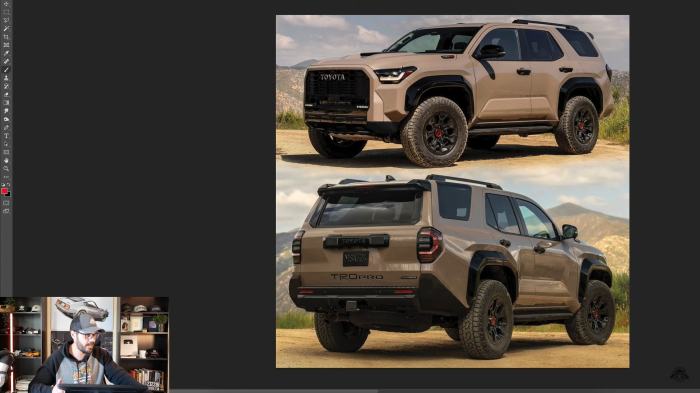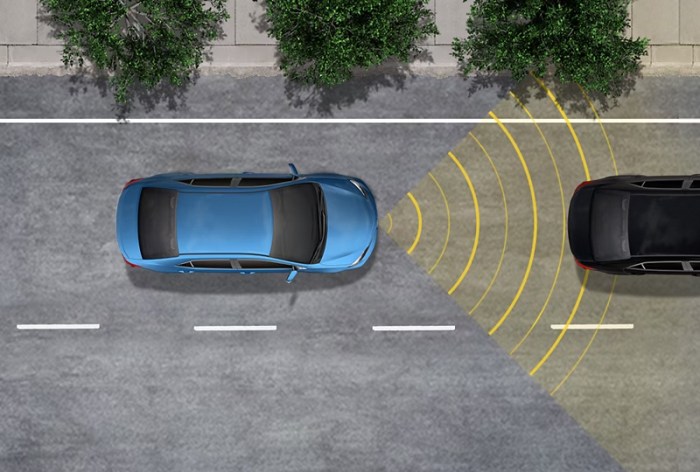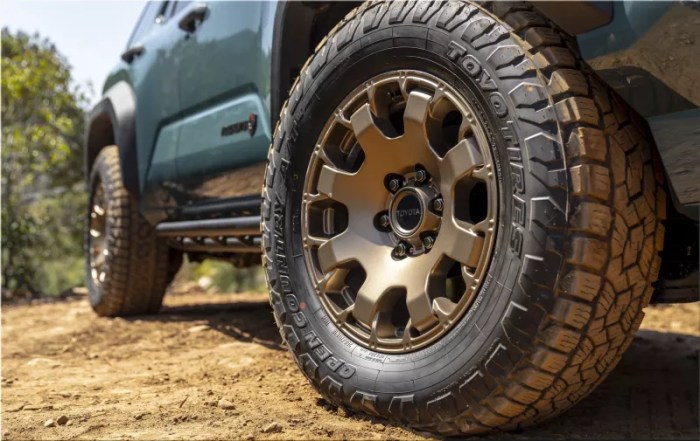The Toyota 4Runner, a legendary SUV known for its ruggedness and off-road prowess, can be further optimized for even more challenging terrains. Whether you’re tackling rocky trails, traversing muddy bogs, or conquering sandy dunes, enhancing your 4Runner’s off-road capabilities can significantly improve your adventures. This comprehensive guide will walk you through various modifications, from simple upgrades to more involved mechanical changes, to make your 2025 4Runner a true off-road champion.
Tire Selection: The Foundation of Off-Road Performance
Your tires are the single most impactful component affecting your 4Runner’s off-road performance. Choosing the right tires is crucial for traction, grip, and overall capability. Consider these factors:
Tire Type:
- All-Terrain (AT) Tires: A great balance between on-road comfort and off-road performance. Suitable for a variety of terrains, including gravel, dirt, and light mud. Popular choices include BFGoodrich All-Terrain T/A KO2 and Goodyear Wrangler DuraTrac.
- Mud-Terrain (MT) Tires: Designed for extreme off-road conditions, including deep mud, rocks, and sand. These tires offer aggressive tread patterns for superior traction but may be louder and less comfortable on paved roads. Examples include Nitto Trail Grappler and Toyo Open Country M/T.
- Extreme Mud-Terrain Tires: For the most demanding off-road situations, these tires provide maximum grip in extreme conditions. However, they compromise significantly on on-road comfort and fuel economy. Consider these only if you primarily use your 4Runner for extreme off-roading.
Tire Size:
Upsizing your tires can provide a more aggressive stance and increased ground clearance. However, it’s crucial to ensure the new tires are compatible with your 4Runner’s wheel wells and suspension. Incorrect tire sizing can lead to rubbing and other mechanical issues. Consult a tire professional or online resources to determine the appropriate tire size for your 4Runner and chosen lift kit (if applicable).
Suspension Upgrades: Improved Articulation and Ground Clearance
Improving your 4Runner’s suspension system is key to enhancing its off-road capabilities. This involves increasing ground clearance, improving articulation (the ability of the wheels to maintain contact with the ground on uneven terrain), and enhancing overall stability.
Lift Kits:
- Leveling Kits: These relatively inexpensive kits level the front and rear of your 4Runner, improving the stance and slightly increasing ground clearance. They are a good starting point for minor upgrades.
- Suspension Lifts: These kits provide a more significant increase in ground clearance, often ranging from 2 to 6 inches. They typically involve replacing shocks, struts, and sometimes springs. Higher lifts often require additional modifications, such as longer control arms and brake lines.
Shocks and Struts:
Upgrading to performance shocks and struts significantly improves the 4Runner’s ride quality and handling, both on and off-road. Look for shocks designed for off-road use, which offer better damping and articulation.
Protection and Armor: Shielding Your 4Runner from Damage
Off-roading inevitably exposes your 4Runner to potential damage. Adding protection and armor will help safeguard your vehicle from rocks, branches, and other obstacles.
Skid Plates:
Skid plates protect the vulnerable undercarriage of your 4Runner, shielding the oil pan, transmission, and other vital components from damage. Steel skid plates offer superior protection but are heavier than aluminum alternatives.
Rock Sliders:
Rock sliders protect the sides of your 4Runner from impacts, providing additional protection during side-hilling and rock crawling. They also serve as sturdy steps for easier entry and exit.
Bumpers:Upgrading to stronger, more robust bumpers, particularly with integrated recovery points, enhances your off-road capabilities and provides additional protection in case of collisions.

Source: autoevolution.com
Drivetrain Modifications: Enhancing Traction and Control
Improving your 4Runner’s drivetrain can significantly enhance its off-road performance. Consider these options:
Locking Differentials:
Locking differentials ensure that both wheels on an axle receive equal power, improving traction in challenging conditions such as mud, sand, or snow. This is particularly beneficial when one wheel loses traction.
Limited-Slip Differentials (LSD):
LSDs provide improved traction compared to open differentials but don’t offer the same level of locking capability as true locking differentials. They are a good compromise between performance and cost.
Winch:
A winch is an invaluable tool for off-road recovery. It allows you to pull your 4Runner out of difficult situations where it might otherwise be stuck. Ensure your winch is properly mounted and rated for the weight of your vehicle.
Other Essential Upgrades:
- Recovery Gear: Invest in essential recovery gear, including recovery straps, shackles, gloves, and a shovel. Knowing how to use this equipment safely is crucial.
- Lighting: Upgrade your lighting system with brighter headlights, fog lights, and off-road lights to improve visibility in low-light conditions.
- Communication: A two-way radio or satellite communication device can be vital for maintaining contact with others while off-roading, especially in remote areas.
- Navigation: Invest in a reliable GPS device or navigation app specifically designed for off-road use.
Frequently Asked Questions (FAQ)
- Q: How much does it cost to upgrade my 4Runner for off-roading? A: The cost varies greatly depending on the modifications you choose. Simple upgrades like tires can cost a few hundred dollars, while more extensive modifications like suspension lifts and locking differentials can cost thousands.
- Q: What is the best lift kit for a 2025 4Runner? A: The “best” lift kit depends on your budget and intended use. Research different brands and kits to find one that suits your needs and driving style. Consider factors like lift height, ride quality, and cost.
- Q: Do I need to re-gear my axles after a lift kit? A: Generally, a lift of 2-3 inches may not require re-gearing, but larger lifts often necessitate re-gearing to maintain optimal performance and prevent excessive strain on the drivetrain. Consult with a professional for advice.
- Q: Can I install these modifications myself? A: Some modifications, such as tire changes and simple leveling kits, can be done by experienced DIYers. However, more complex modifications like suspension lifts and differential installations are best left to professional mechanics.
Resources:
- Toyota 4Runner Official Website
- BFGoodrich Tires
- Goodyear Tires
- (Add other relevant links to reputable off-roading parts suppliers and resources)
Conclusion:
Enhancing the off-road capabilities of your 2025 Toyota 4Runner is a rewarding experience that can unlock a world of adventure. By carefully considering the modifications Artikeld above and prioritizing safety, you can transform your 4Runner into a capable and reliable off-road machine. Remember to always prioritize safety and responsible off-roading practices.

Source: theautohost.com
Call to Action:
Ready to take your 4Runner’s off-road performance to the next level? Start planning your upgrades today! Contact a trusted off-road specialist or browse our selection of high-quality parts and accessories. Let the adventure begin!

Source: gerane.com
Frequently Asked Questions
What is the best tire pressure for off-road driving?
The ideal tire pressure depends on the terrain and your vehicle’s specifications. Lowering pressure improves traction on soft surfaces but reduces handling at higher speeds. Consult your owner’s manual and consider using a tire pressure gauge for optimal results.
Are aftermarket bumpers necessary for off-roading?
Aftermarket bumpers offer increased protection and recovery points, but are not strictly necessary for all off-roading. The decision depends on the intensity of your off-road adventures and your comfort level.
How important is a winch for off-road recovery?
A winch is a valuable asset for self-recovery in challenging situations, allowing you to extract yourself from difficult spots without relying on outside assistance. It’s a significant investment, but a worthwhile one for serious off-roaders.
